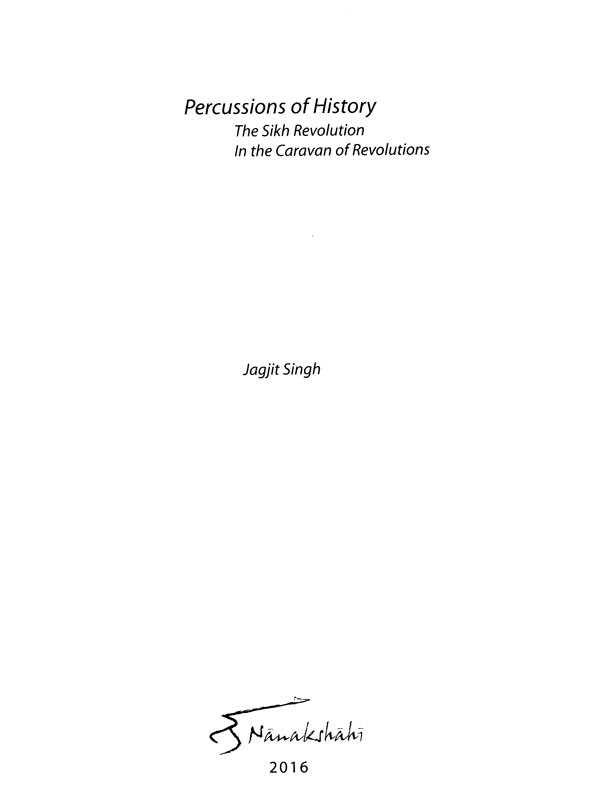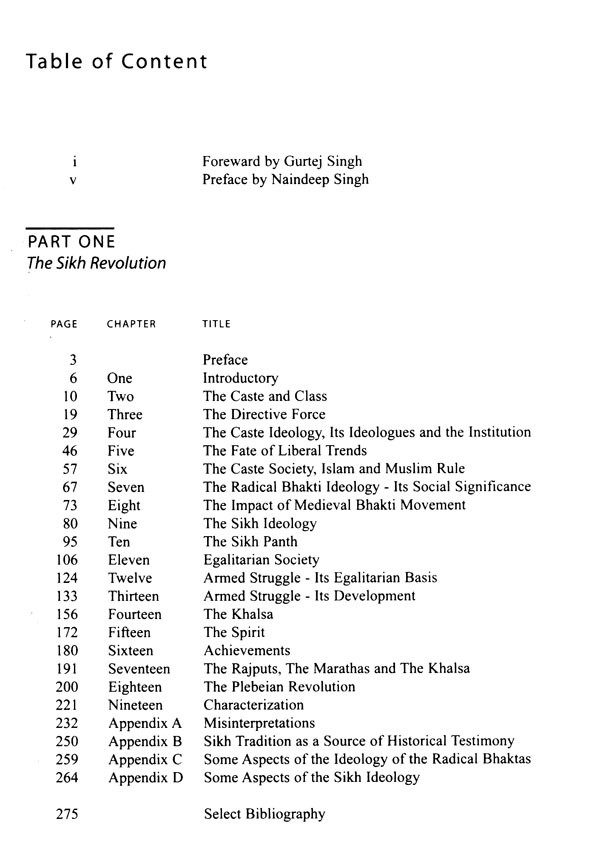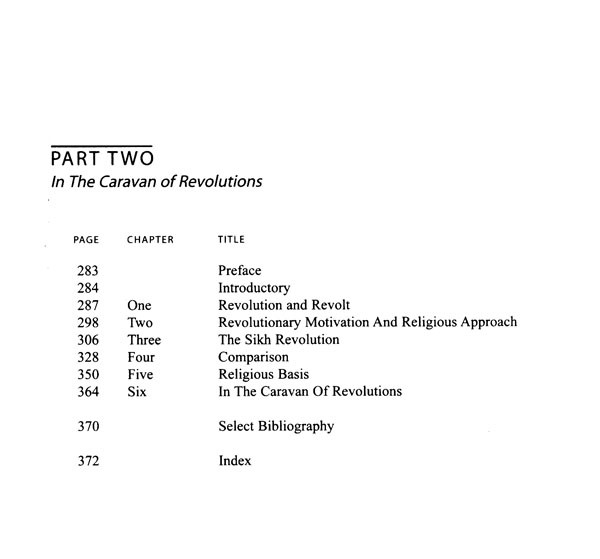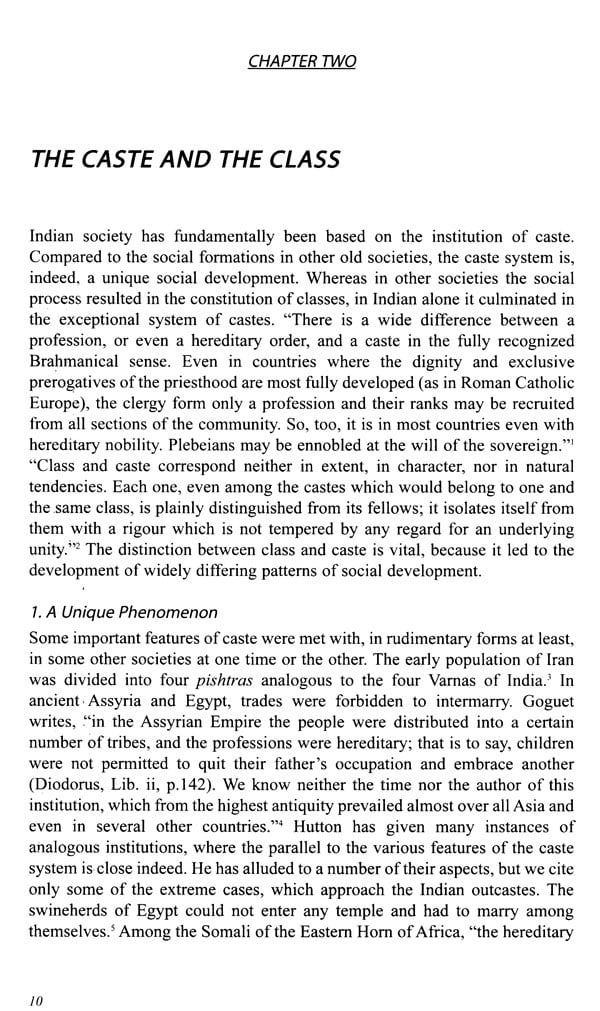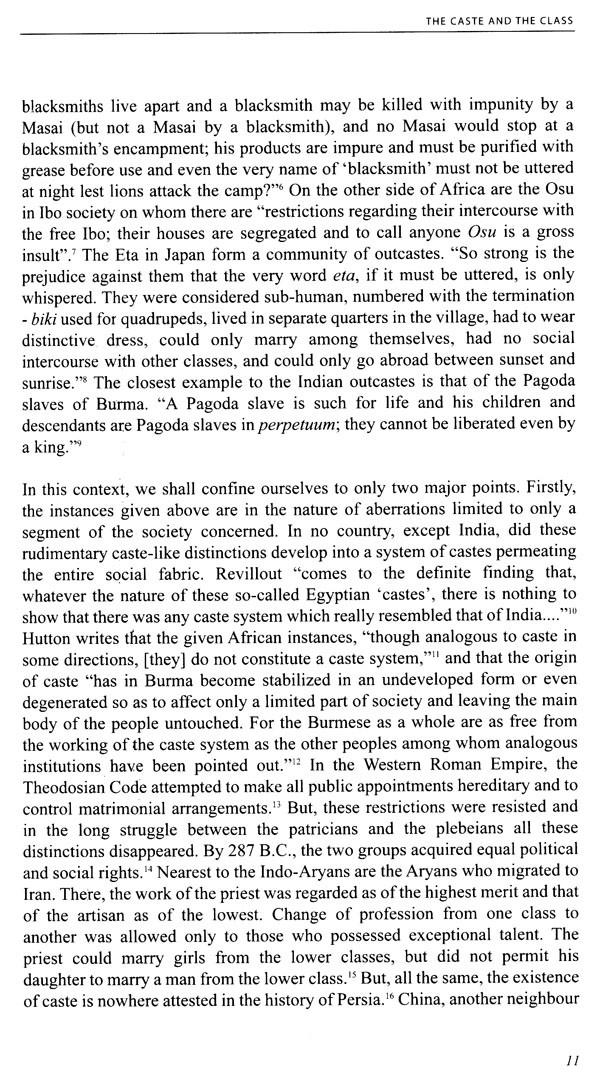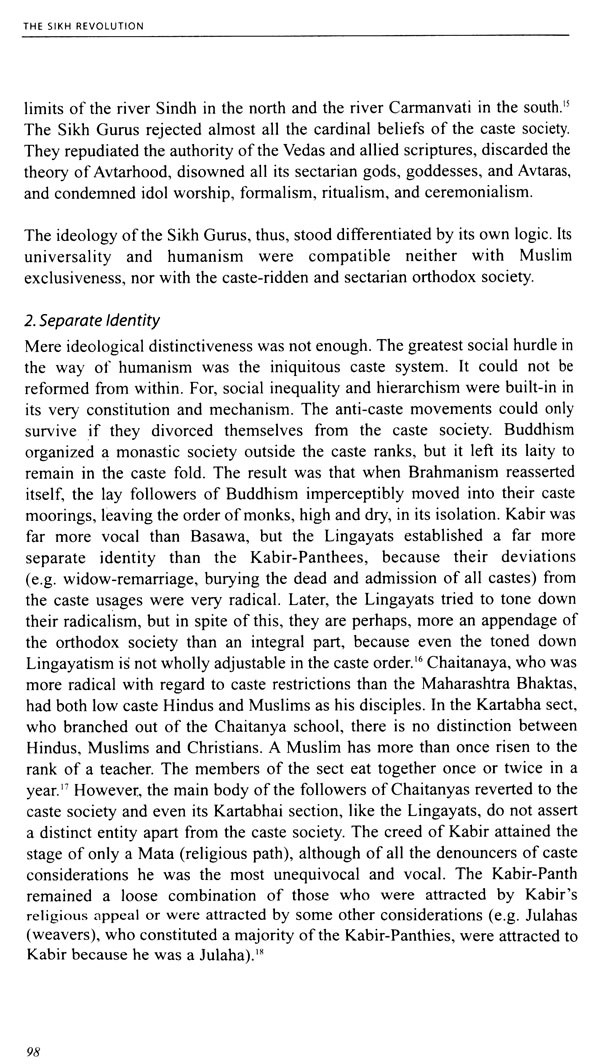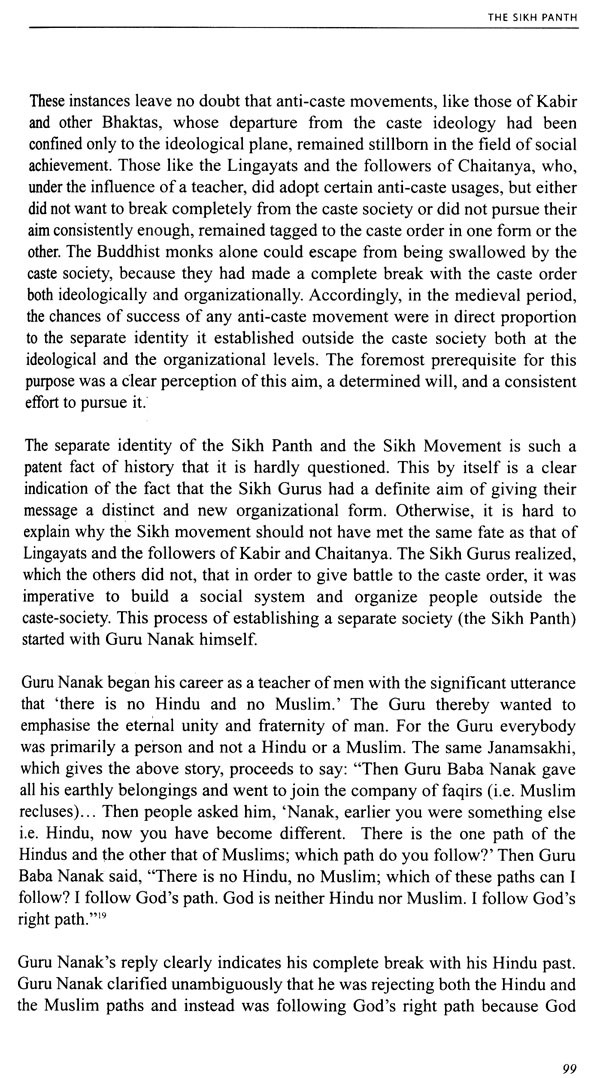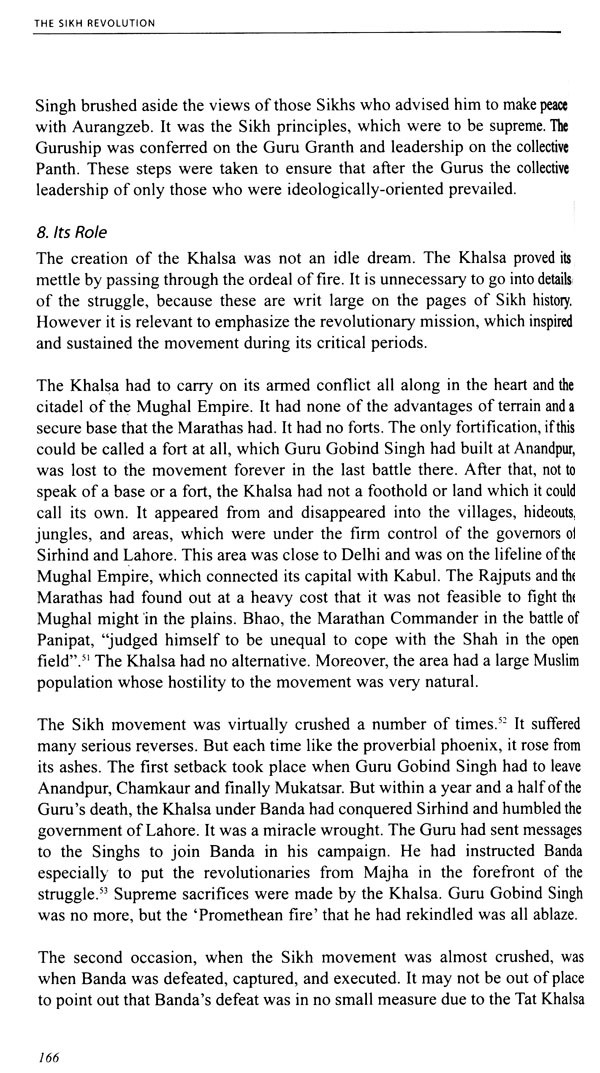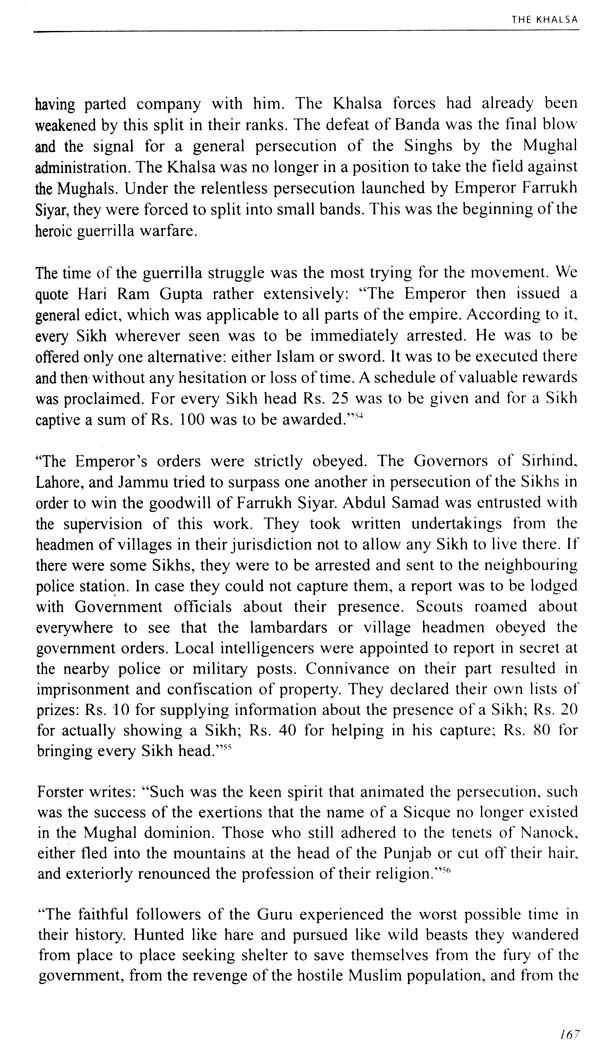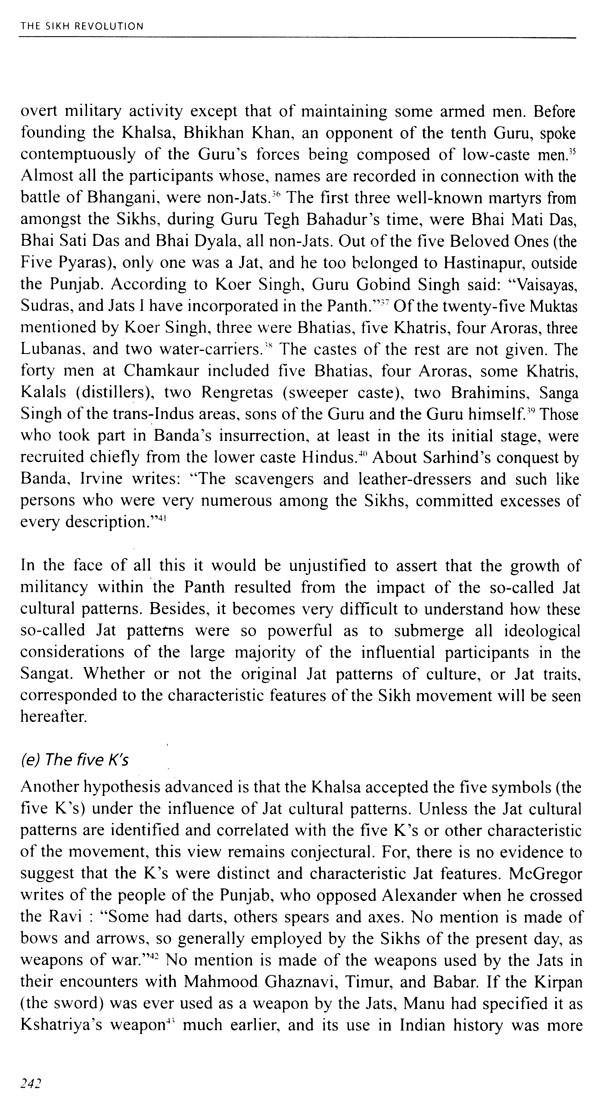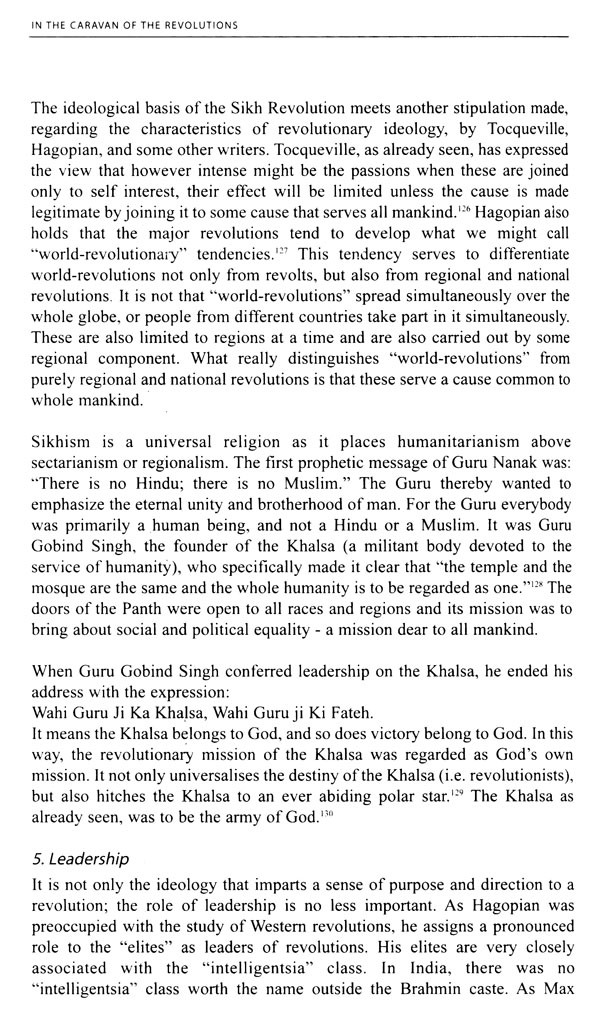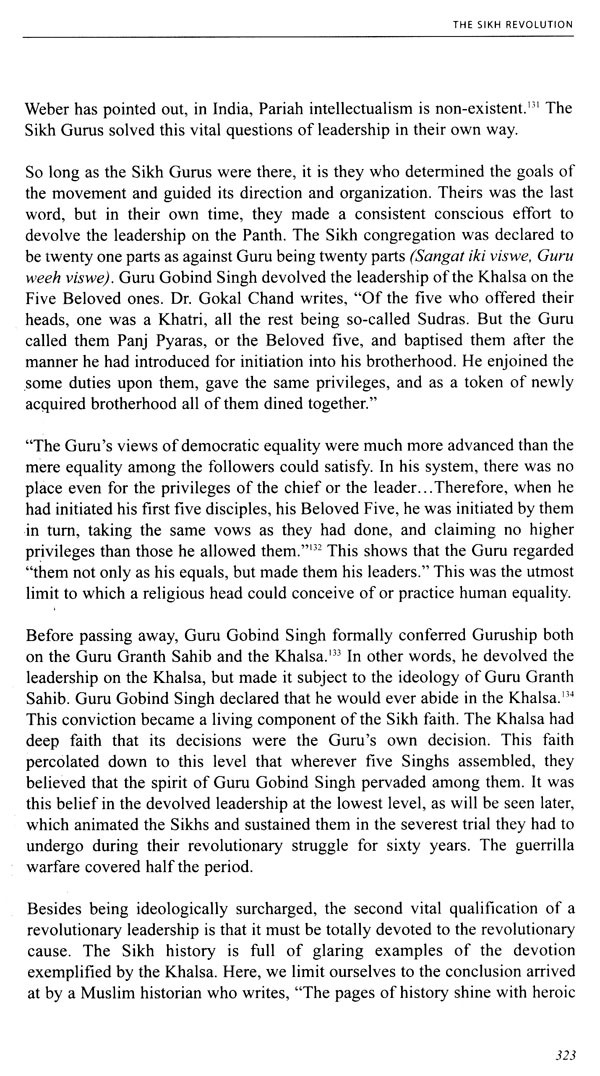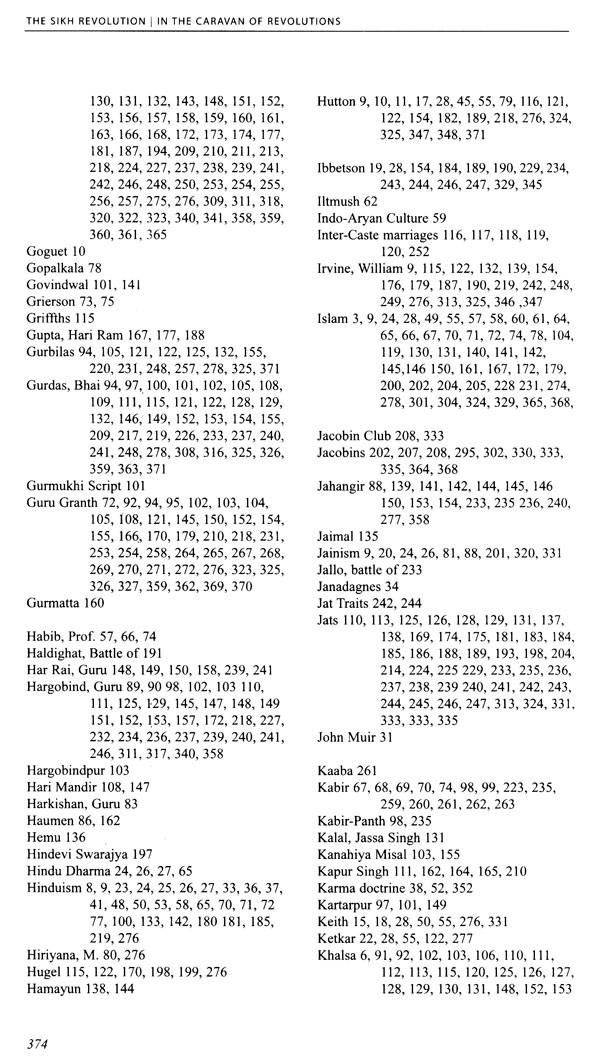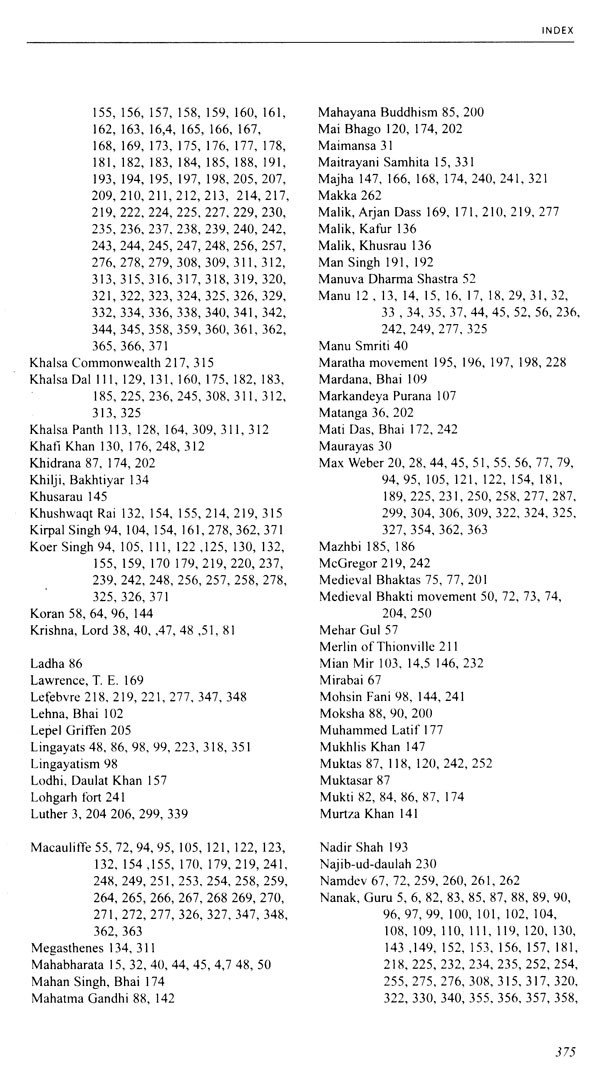
Percussions of History- The Sikh Revolution in the Caravan of Revolutions
Book Specification
| Item Code: | UAZ855 |
| Author: | Jagjit Singh |
| Publisher: | The Nanakshahi Trust, Panjab |
| Language: | English |
| Edition: | 2016 |
| ISBN: | 8188306002 |
| Pages: | 388 |
| Cover: | HARDCOVER |
| Other Details | 9.00 X 6.00 inch |
| Weight | 770 gm |
Book Description
After the popularity of The Sikh Revolution, Jagjit Singh was persuaded to release his sequel In the Caravan of Revolutions. While his first book was Sikh-specific in its focus, his second book was aimed at confirming the position of the Sikh Revolution amongst the other great world revolutions: both secular (French Revolution, American Revolution) and religious (Revolution of Semitic Traditions).
Singh's key writings include The Sikh Revolution (1981), Perspectives of Sikh Studies (1985), Zat Pat te Sikh (1986), In the Caravan of Revolutions (1988) and Dynamics of Sikh Revolution (1999).
Singh held a B.S. in Chemistry from Khalsa College, Amritsar and a M.S. in Chemistry from Panjab University, Lahore. He co-founded the Institute of Sikh Studies to advocate sovereign Sikh perspectives in academia.
At another level, the image of Sardar Jagjit Singh fits very neatly into this pattern. He had worked closely with the heroes of the revolutionary Ghadar Movement. It was lead by public-spirited Sikhs whose ultimate aim was to establish a coercion free society based on equality of opportunity and guided by a secular modern polity. They believed this to have been inspired by their original religious instructions. Much of his time as a young man was spent in spreading their message. He travelled from village to village on a shoe-string budget for the sake of inspiring key figures in the village society. He himself was also the biggest contributor to the funds he used for his travelling. He sometimes had to go hungry for there were not many hotels then. He told me once how at the Sarai Naga village of Mukatsar, he was so hungry that he accepted the invitation of a total stranger to share a frugal meal of onion-chillies paste and baked flat bread.
He shared the basic belief of the revolutionaries that every person was created a sovereign to make unhindered spiritual and material progress according to his or her religious persuasion. This belief had been the foundation of the Sikh society from the very beginning and had inspired its conduct in history. It is summed up by the revolutionary slogan of the eighteenth century Sikh revolutionaries resisting and finally dismantling the sway of the Mughal, Persian and Afghan empires over their homeland. It ran: 'a king in every saddle' (hanne hanne mir). They believed that violence to dislodge much more reprehensible and ever intensely continuing violence of the alien state power was legitimate. In the eighteenth century such severely controlled violence had been used so meticulously that not a single person was eliminated or even coerced after the political objective had been achieved.
Upon completing my undergraduate career, I had come to Panjab on a mission. to learn about my roots, heritage, community, and about myself. I read books, took classes, met people, and had various experiences exploring my faith. From this seemingly disjointed influx of information I was seeking a holistic paradigm to understand my faith. It was at this point that I was introduced to the works of Jagjit Singh.
Often books on Sikhi are little more than regurgitation of the Sikh tradition. Western academia enters into the debate by challenging notions of that tradition, but often without providing a viable alternative. It was in this setting of increasing challenge from western academics that Jagjit Singh set forth to expound what he terms the "Sikh thesis." It is only through understanding Gurbani and how it was manifested through the life and times of the Gurus and the post-Guru period that we can understand the message that was the mission of Guru Nanak.
To understand the significance of the Sikh Revolution one must understand the land, the history, and the people from which it was born. Singh delves into the history of early modern South Asia, paying particular attention to the caste institution. He describes the liberation movements that preceded the Revolution of Nanak, attempting to understand the reasons for their successes as well as ultimate failures. Finally, in this context he brings to light the uniqueness of the Sikh Revolution and its extraordinary achievements. What makes this book novel and unique is that Singh presents an interpretation of Sikh history and its mission.
In The Sikh Revolution, Jagjit Singh hoped people could appreciate its achievements and realize its rightful place on the stage of great revolutions. However, it would be left to his later In the Caravan of Revolutions, where he would fully expound and compare the Sikh Revolution to the other great revolutions both religious and secular. It is with great delight that both these important works are being re-released by the Nanakshahi Trust.
The French Revolution began in 1789. The Khalsa was created ninety years earlier in 1699. The French Revolution was started by the middle class and "the blind driving power behind it... was an apparently accidental upheaval of the poor Guru Gobind Singh established the Khalsa with the deliberate plan that the downtrodden, including the outcasts, should capture political power. During the first thrust of the French Revolution (1789 to 1792), "the middle class became a privileged oligarchy in place of the hitherto privileged, feudal aristocracy" When the Khalsa wielded political power for the first time, "the lowest of low in Indian estimation" were equal co-sharers of that authority.
Guru Nanak" started his mission around the year 1486 and the Missiles were established in 1764. During this period of 275 years or so, which is the period that forms the subject of the book, the Sikh movement was continuously engaged: first in propagating the ideals of complete human freedom and equality, then in building a society (The Sikh Panth) based on these ideals, and, finally, in creating through the Panth a political revolution. The purposefulness and the tenacity with which this noble, but difficult mission was pursued for so long left its own stamp on the movement.
The significance of these developments cannot be fully appreciated unless they are viewed against the background of the system of castes on which the Indian society was based. There is not a single other movement of Indian origin, which owned, let alone gave shape to, the ideal that the sovereignty of the land vested in the commoners. Similarly, no other movement succeeded in deliberately establishing a distinct social entity outside the caste society. Only the Buddhists" had done it, but that was long ago and it was confined to the order of the monks.
**Contents and Sample Pages**
